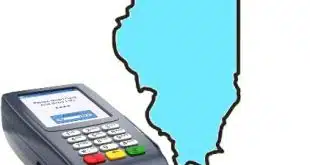Capping a process that began last fall, NACHA announced a partner on Monday to help commercialize a system it has been piloting that lets consumers receive and pay bills electronically through the automated clearing house network. The Clearing House Payments Co. LLC, a New York City-based company whose Electronic Payments Network runs a switch for the ACH, has been selected by NACHA to manage a critical biller directory and run an authentication system for the new payment service. With The Clearing House, which is owned by some of the largest commercial banks in the country, on board, NACHA expects significant bank adoption of its Electronic Billing Information Delivery Service (EBIDS) will follow. The company “will do the heavy lifting,” said Janet O. Estep, president and chief executive of NACHA, during a press conference NACHA held on Monday at its Payments 2010 trade show in Seattle, to make the bill-presentment and ?payment system widely available to financial institutions. NACHA indicated publicly in February it was seeking a partner to help take out of pilot mode and into full-scale production (Digital Transactions News, Feb. 23). It said it hoped to roll out a commercial service some time before the end of the year. Now that The Clearing House has apparently prevailed in that search, the company says building out the biller directory will be a high priority. “That's the kernel of our system,” said David S. Fortney, senior vice president for product development and management at the The Clearing House, at a press conference. “We want to make sure it's open and accessible to all participants.” The directory will serve as a sort of electronic phone book for EBIDS, listing all participating billers and matching them up with enrolled customers. Commercializing EBIDS is expected to attract more billers and financial institutions to the service, NACHA officials said. These participants are interested in the product but were wary of participating in a pilot. “Some billers and/or [financial institutions] said, 'When will it be out of pilot,” said Estep. “They want to know there will be a future.” So far, four banks and one biller, Verizon Communications, are participating in the pilot. Two of the banks, Dollar Bank and Wells Fargo & Co., are taking part as so-called consumer banks, or banks that hold the accounts of bill payers. Two others, JPMorgan Chase & Co. and HSBC, are participating as billers' banks, or institutions holding the accounts of biller companies. Meanwhile, two other billers, Time Warner and Comcast, along with JPMorgan Chase are involved in a new, scaled-down version of EBIDS launched last summer called Pay Only. With Pay Only, billers can request and receive payment from customers, but no e-bill is presented. That simplifies the implementation of EBIDS for billers and financial institutions and gets the system operating sooner, though NACHA has said implementation issues for the full-scale EBIDS are not onerous. EBIDS has handled 4.5 million transactions, including consumer enrollments, since the pilot commenced in September 2008. Estep said Herndon, Va.-based NACHA, which regulates the ACH, is still working out final pricing for a commercial EBIDS product. In the pilot, billers' banks paid 13 cents per transaction, with 10 cents going to consumers' banks and 3 cents going to NACHA to support the EBIDS infrastructure. With EBIDS, a consumer who enrolls through his bank's online-banking program can receive and pay bills electronically through that same program. Once notified of an enrollment, the biller generates an ACH file containing amount owed, minimum payment due, and due date. This record flows via the ACH from the biller's bank to the consumers' bank, triggering an e-mail to the consumer alerting him that a bill has been received. Upon logging in, the consumer can view the entire bill by clicking on a hyperlink. Specialized single-sign-on technology called Security Assertion Markup Language (SAML) authenticates the consumer so he doesn't have to log in again to view the bill. Part of The Clearing House's responsibilities will be to run the SAML server. When the consumer pays the bill on his bank's site, the bank creates an ACH credit that flows back to the biller's bank. The consumer receives online confirmation that the payment was made and the biller receives funds within one or two days. Since the payment is an ACH credit rather than a debit, Regulation E rules giving consumers 60 days of recourse on payments don't apply.
Check Also
Has the CCCA Reached the End of the Road?
With the odds against the Credit Card Competition Act coming to a vote before the …





